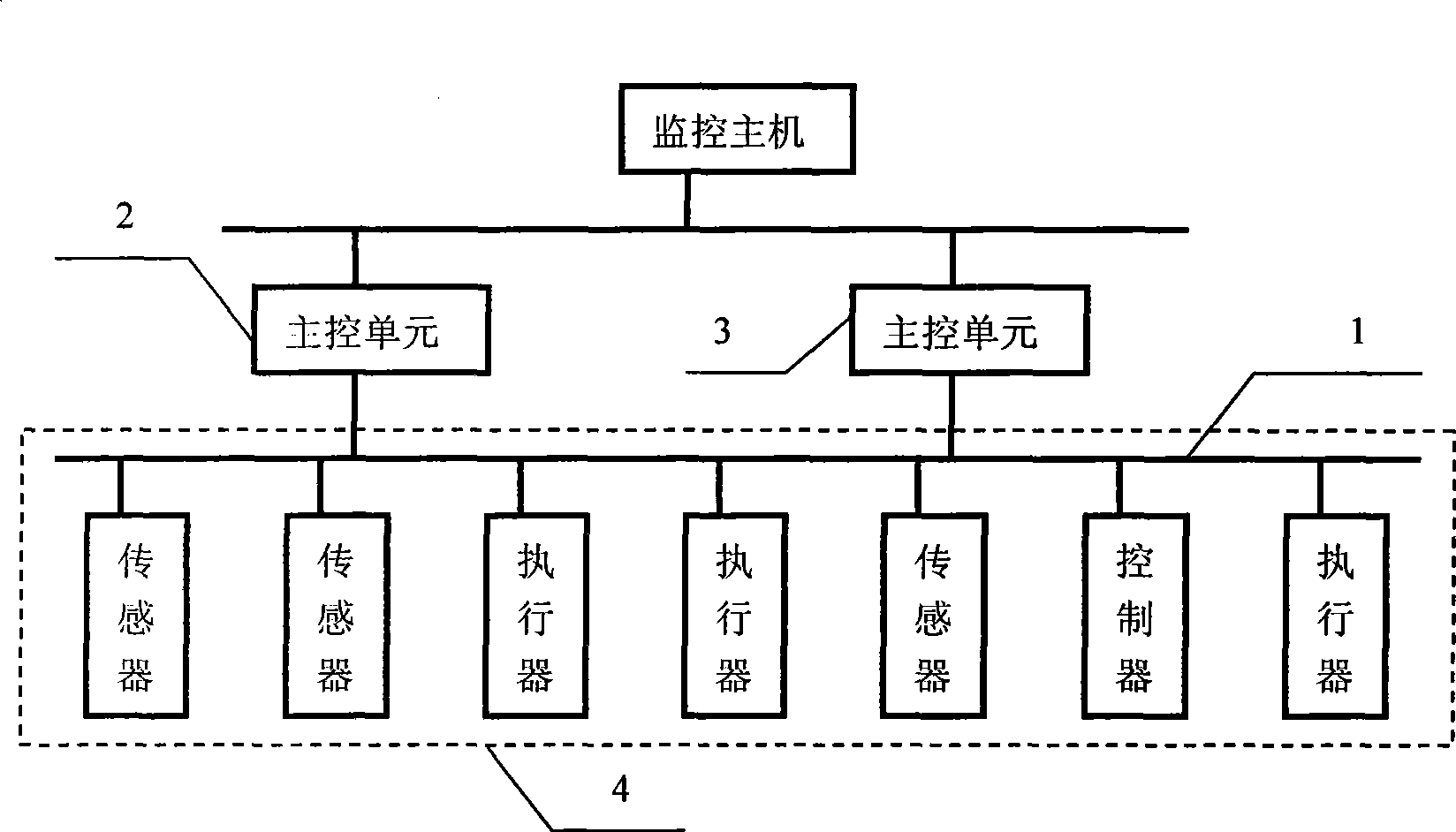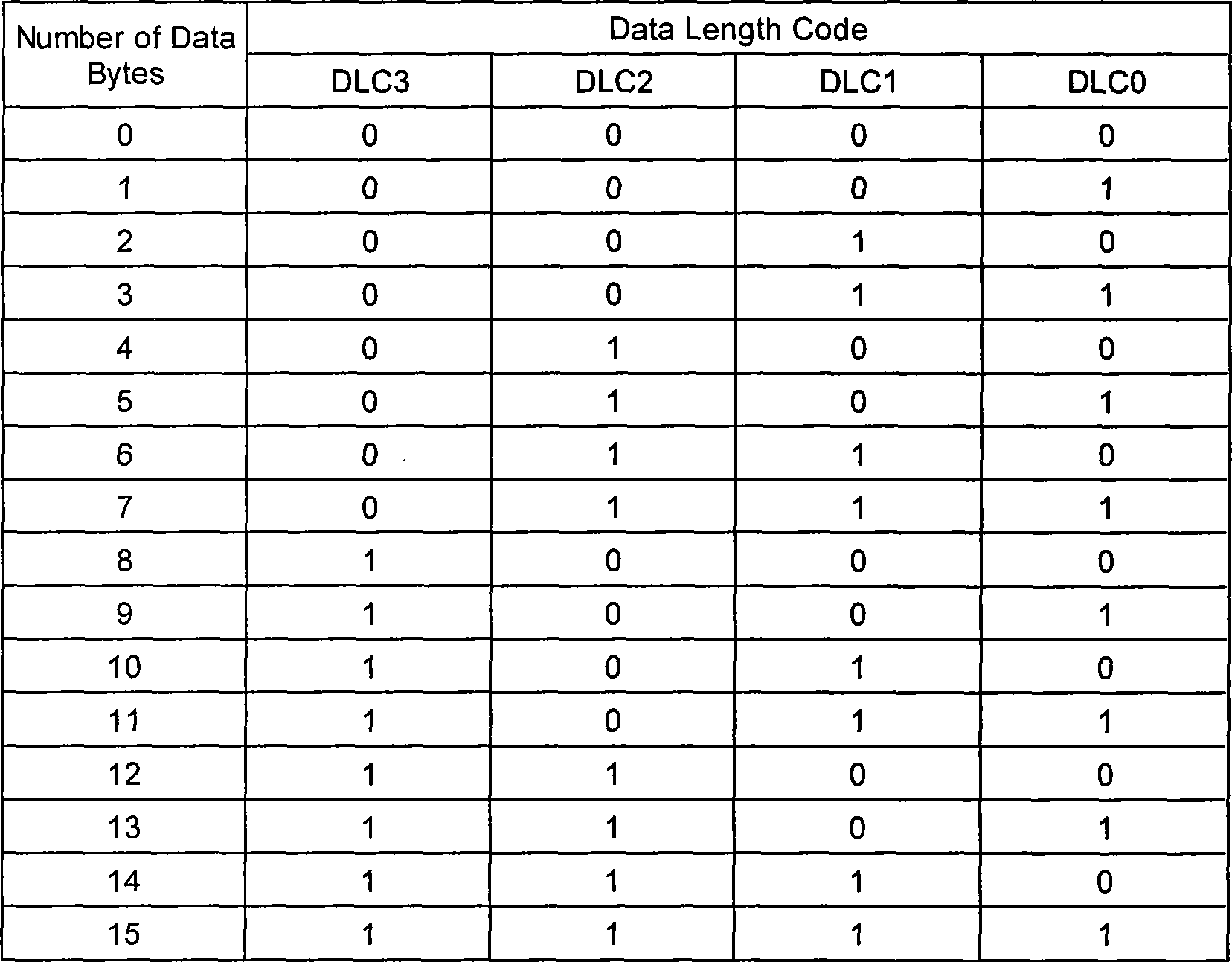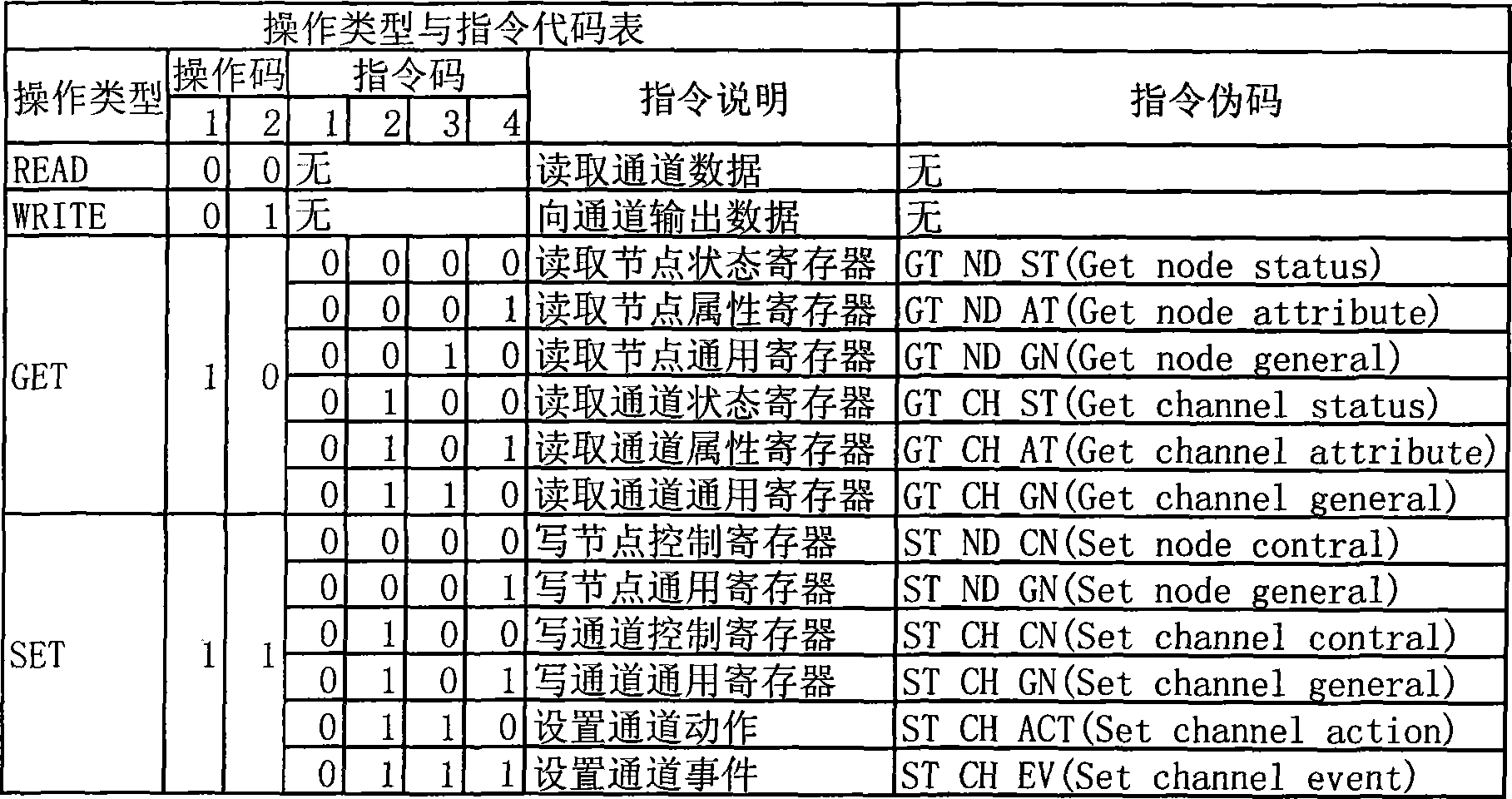Single bus sensor network protocol
A sensor network and single-bus technology, applied in the direction of bus network, data exchange network, transmission system, etc., can solve the problems of high real-time requirements, inability to expand functions, and poor scalability of sensor networks, so as to improve economic applicability and improve Application versatility and the effect of saving development costs
- Summary
- Abstract
- Description
- Claims
- Application Information
AI Technical Summary
Problems solved by technology
Method used
Image
Examples
Embodiment Construction
[0030] The invention is independent of the physical medium, and the interface design can receive changes on the network communication line, but does not define the physical medium.
[0031] The protocol stipulates the process of realizing the plug-and-play feature of slave nodes by identifying frames. When the slave node accesses the bus for the first time or after receiving the master node reset frame, the slave node is set to reset state. The slave node in the reset state sends an identification frame when the bus is idle, and after the master node confirms, the slave node enters the running state. Only slave nodes in running state can receive and send data normally.
[0032] The master node can maintain a slave node table, which records the attributes and configuration information of each node. When the master node finds a new slave node, it will add the node to the table, then query and record the relevant attributes of the newly added node, such as node type, name, chan...
PUM
 Login to View More
Login to View More Abstract
Description
Claims
Application Information
 Login to View More
Login to View More - R&D
- Intellectual Property
- Life Sciences
- Materials
- Tech Scout
- Unparalleled Data Quality
- Higher Quality Content
- 60% Fewer Hallucinations
Browse by: Latest US Patents, China's latest patents, Technical Efficacy Thesaurus, Application Domain, Technology Topic, Popular Technical Reports.
© 2025 PatSnap. All rights reserved.Legal|Privacy policy|Modern Slavery Act Transparency Statement|Sitemap|About US| Contact US: help@patsnap.com



